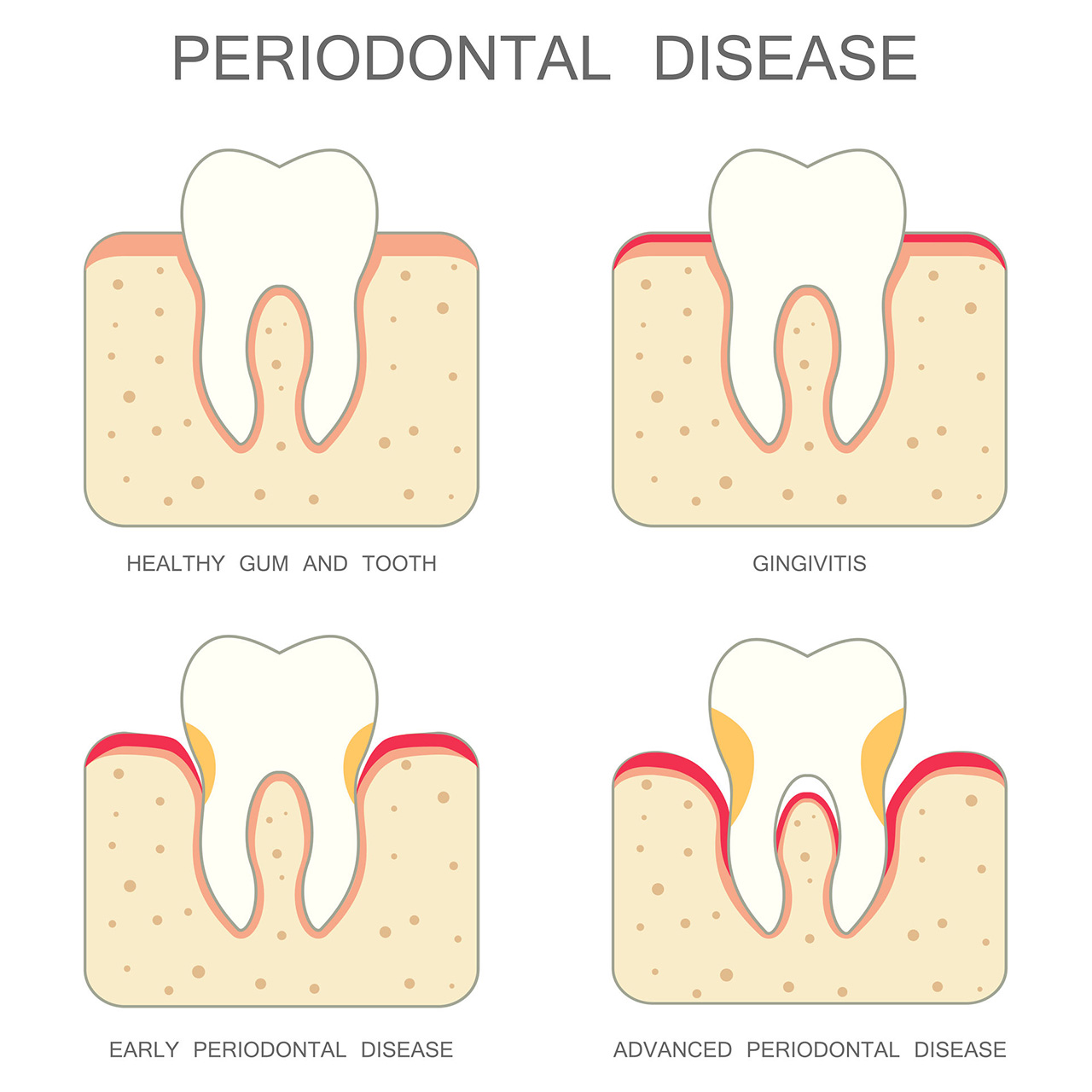Introduction
Gum disease is one of the more prevalent diseases that occur in the mouth. The primary cause of gum disease is a lack of oral hygiene.
The disease is a progressive one and can usually be arrested and resolved in it’s earlier stages. Continued advancement of the disease can lead to bone loss around the tooth, and in it’s later stages, will present as shaky teeth and/or gum infection.
Regular hygiene checks at the dentist are important. The dentist is able to diagnose the gum disease at an early stage and prescribe early treatment to prevent further advancement of the disease.
The disease usually starts out with frequent bleeding when flossing or brushing teeth. This is one of the first signs of early gum disease. The bleeding is a reaction of the gums to the presence of foreign contaminants. This is usually caused by a build up of plaque, which is a soft film bacteria. If left there, this can lead to tooth decay or may harden into tartar. Bleeding gums are frequently associated with red, swollen gums. At this stage, if no bone or gum has shrunk away, is completely reversible.
Tartar is a stone-like build up, which is stuck onto the tooth or root surfaces. This needs to be removed by special instruments by the dentist.
If tartar is left on the tooth for an extended period, the bone and gums surrounding the tooth will respond by shrinking. Once bone or gum loss has occurred, it cannot be reversed without further treatment.
Continued bone or gum loss will result in pain, infection and shaky teeth, which may result in the tooth needing extraction.
Frequent dental check-ups and maintenance is essential to ensuring that that gum disease is prevented.
In advanced stages of gum disease, treatments like root planning and curettage may need to be carried out.

Benefits
- Preservation of teeth and gums
Regular cleaning has been shown to greatly reduce the presence of bacteria in the oral cavity and preserve the condition of the teeth and gums. - Elimination of bad breath
Plaque and tartar release a bad smell which can contribute to bad breath. By removing these causative products, the occurrence of bad breath is reduced. Better health
Bacterial products from gum disease can be passed into the bloodstream and be distributed to organs in the body.Insulin resistance in diabetic patients can be increased from these bacterial products, thereby worsening the diabetic condition.
Diabetes has also been well-documented to increase the advancement of gum disease.
FAQs
What can I do to prevent gum disease?
Prevention must begin from home. Proper cleaning habits, like brushing at least twice a day and flossing, is the first line of defence against gum disease.The next thing is to visit the dentist regularly. The reason for this is so that any possibility of progression of the gum disease can be monitored and prevented at an early stage.
The secret to tackling gum disease is a balanced two-way relationship between the patient and dentist.
What type of toothbrush should I use?
It is recommended to have a toothbrush with soft bristles. Although there are many products out there with fancy (and often complicated) bristle formations, we tend to advise in brush-heads with a simple brush tip formation. The simpler the design of the bristles, the smaller the head will be and the less interference it will have when brushing teeth at the back.It is recommended to change your toothbrush at least every 3-4 months or when your brush head starts looking frayed.
What is the recommended way of brushing?
The recommended way to brush teeth now is called the Modified Bass Technqiue.The brush-head is angled 45 degrees towards the gum, and instead of a destructive back-forth motion, a circular massaging motion will help to prevent root surface abrasion and help to clean and stimulate the gums.
Are mouthwashes of any use?
Mouthwashes are effective to be used in addition to brushing. They are not to be used in place of brushing.Non-alcoholic mouthwashes are recommended as some alcoholic mouthwashes can be very traumatic for the gums, cheeks and tongue.
What is root planning or curettage?
Root planning is required when there is tartar build up under the gums and on the root surface. Some individuals may refer to this as 'deep cleaning'.During the examination, the dentist will determine if there is any deep lying tartar. Xrays may be required to help in the diagnosis.
Frequently, removal of this deep tartar will require the treatment to be performed under local anaesthetic.
This will also usually undergo multiple visits divided into the treatment phase and the review phase. If bone or gum grafting is required, a specialist can perform this treatment for you.
Contact Us
If you have any query about our clinic or treatments, do drop us an email, and we will get right back to you!
